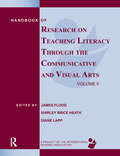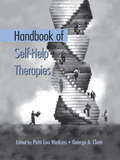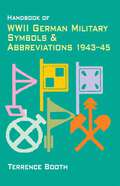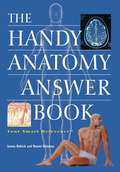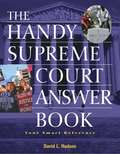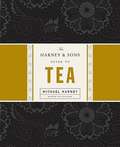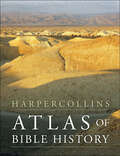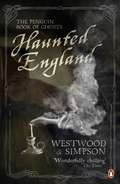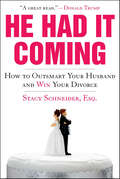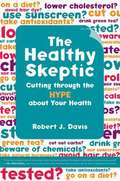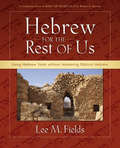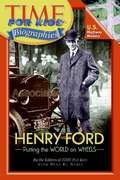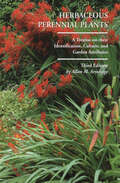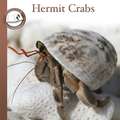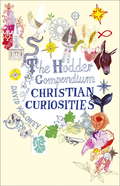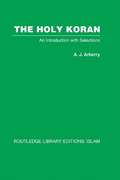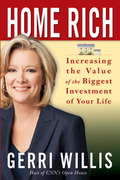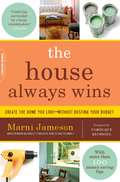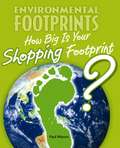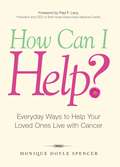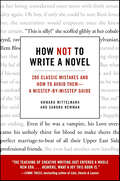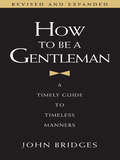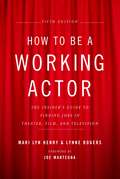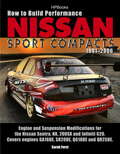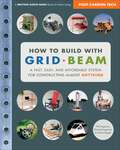- Table View
- List View
Handbook of Research on Teaching Literacy Through the Communicative and Visual Arts, Volume II: A Project of the International Reading Association
by James Flood Shirley Brice Heath Diane LappThe Handbook of Research on Teaching Literacy Through the Communicative and Visual Arts, Volume II brings together state-of-the-art research and practice on the evolving view of literacy as encompassing not only reading, writing, speaking, and listening, but also the multiple ways through which learners gain access to knowledge and skills. It forefronts as central to literacy education the visual, communicative, and performative arts, and the extent to which all of the technologies that have vastly expanded the meanings and uses of literacy originate and evolve through the skills and interests of the young. A project of the International Reading Association, published and distributed by Routledge/Taylor & Francis. Visit http://www.reading.org for more information about Internationl Reading Associationbooks, membership, and other services.
Handbook of Self-Help Therapies
by Patti Lou Watkins George A. ClumThis volume constitutes the first solidly research-grounded guide for practitioners wending their way through the new maze of self-help approaches. The Handbook of Self-Help Therapies summarizes the current state of our knowledge about what works and what does not, disorder by disorder and modality by modality. Among the covered topics are: self-regulation theory; anxiety disorders; depression; childhood disorders; eating disorders; sexual dysfunctions; insomnia; problem drinking; smoking cessation; dieting and weight loss. Comprehensive in its scope, this systematic, objective assessment of self-help treatments will be invaluable for practitioners, researchers and students in counseling psychology, psychiatry and social work, health psychology, and behavioral medicine.
Handbook of WWII German Military Symbols & Abbreviations 1943-45
by Terrence BoothA comprehensive reference guide to German military symbols used on documents, maps, orders of battle and elsewhere.To the uninitiated, German military symbols can appear indecipherable. Yet understanding their meaning is essential to any serious research of the WWII German Armed Forces. This book provides a clear and comprehensive reference to these symbols, as seen in photos, tables of organization and maps for the period May 1943 onwards. The first two parts of the book feature an overview of how the German Armed Forces used the symbols in the field. Parts III, IV and V deal with specific forms and categories of symbols used. The format provides an image of each symbol, accompanied by the relevant German term and its English translation, along with any pertinent information that will aid the reader’s understanding of the symbol and the unit that it represented. The final part of the book, containing a list of over 500 abbreviations and their German terms, supplemented by English translations, should prove invaluable to any reader who has more than a passing interest in the Second World War German Armed Forces.
The Handy Anatomy Answer Book
by James Bobick Naomi BalabanFrom basic biology and the lymphatic system to human growth and development, this comprehensive reference-organized by systems of the body-makes the sometimes perplexing nature of anatomy understandable through an engaging question-and-answer format. In addition to the science itself, the people and history behind anatomy are discussed. More than 1,200 questions are answered, including Do identical twins have the same fingerprints? What are the primary sensations of taste? What is the integumentary system? and How many bones are in the human body?
The Handy Supreme Court Answer Book
by David L HudsonFrom the origins of the court to modern practical matters-including the federal judiciary system, the Supreme Court's session schedule, and the argument, decision, and appeal process-this resource provides detailed answers on all aspects of the Supreme Court. Exploring the social, cultural, and political atmosphere in which judges are nominated and serve, this guide book answers questions such as When did the tradition of nine justices on the bench begin? When did the practice of hiring law clerks to assist with legal research and writing begin? and How do cases reach the Supreme Court? Details on historic decisions-including Marbury v. Madison, Brown v. Board of Education, Miranda v. Arizona, and Bush v. Gore-accompany a thorough history of all 17 Supreme Court Chief Justices.
The Harney & Sons Guide to Tea
by Michael HarneyRead Michael Harney's posts on the Penguin Blog. The country's leading connoisseur presents a comprehensive guide for developing your tea palate. The Harney & Sons Guide to Tea transforms tea drinkers into tea experts. Written by one of the country's leading tea professionals, The Harney & Sons Guide to Tea is an illuminating resource for tea drinkers interested in developing and refining their palate as well as their understanding of the complex agricultural, historical, and cultural significance of tea. Drawing on his singular experience, Michael Harney masterly explores the full range of teas, revealing how each tea is distinctive, with a taste that derives from a precise combination of cultivation and production techniques, and influenced by the geography as well as its history. These lively profiles of diverse tea varieties--from delicate white tea to aged black puerh tea--include brewing instructions and vivid descriptions of the beverage scent, taste, and appearance; everything you need to become a connoisseur. Tea has long been popular in the United States, but only recently have Americans treated this nuanced beverage with a deeper curiosity, more refined approach, and wider appetite. The Wall Street Journal reports that total U.S. tea sales are nearly four times what they were in 1990, and this growing population of discriminate consumers will celebrate the new vocabulary provided in The Harney & Sons Guide to Tea. Unique in scope, candor, and accessibility, The Harney & Sons Guide to Tea will quickly become the classic reference and staple in the library of every serious tea drinker.
HarperCollins Atlas of Bible History
by James B. PritchardFrom the earliest evidence of humankind in Palestine to the establishment of the kingdoms of Judah and Israel, the ministry of Jesus, and the rise of the Christian Church, the richly illustrated HarperCollins Atlas of Bible History brings the Bible to life in all its geographical context.Detailed biblical references, timelines, and suggestions for further reading accompany each period of biblical history, conveying a tangible sense of the land, events, and people portrayed in the world's most famous book. With more than 100 full-color maps, timelines, and expert explanations, this superlative reference work will enable readers to more fully appreciate and understand the Bible and its stories.The HarperCollins Atlas of Bible History features:Over 100 full-color geographical and topographical mapsThe latest archaeological information, floor plans, city plans, illustrations, and artistic recreations of ancient lifeCharts, graphs, statistics, informative sidebars, and moreDetailed biblical referencesTimelines that place each section of the Bible in its historical contextWeb site recommendations for further interactive study
Haunted England: The Penguin Book of Ghosts
by Jennifer WestwoodWatch out for a ghostly ship and its spectral crew off the coast of CornwallListen for the unearthly tread and rustling silk dress of Darlington's Lady JarrattShiver at the malevolent apparition of 50 Berkeley Square that no-one survives seeing Beware the black dog of Shap Fell: a sighting warns of fatal accidents England's past echoes with stories of unquiet spirits and hauntings, of headless highwaymen and grey ladies, indelible bloodstains and ghastly premonitions. Here, county by county, are the nation's most fascinating supernatural tales and bone-chilling legends: from a ghostly army marching across Cumbria to the vanishing hitchhiker of Bluebell Hill, from the gruesome Man-Monkey of Shropshire to the phantom congregation who gather for a 'Sermon of the Dead' ...
He Had It Coming: How to Outsmart Your Husband and Win Your Divorce
by Stacy SchneiderIt's all about getting even. We all know that women earn less than men, and unfortunately this also applies to the spoils of divorce. Veteran trial attorney and former divorce lawyer Stacy Schneider, Esq., knows what it takes to get women their fair share, and now, using examples from her own practice and her own divorce, she is making the strategies that worked for her available to you! In a single handbook, He Had It Coming answers your questions, calms your nerves, and walks you through the process with confidence and control. Centered around her one-of-a-kind Pre-Divorce Plan, Schneider guides you through a divorce lawsuit, revealing insider information, divorce success secrets, and tactics, including: the answer to the number one question asked by wives on the verge of divorce crucial planning measures to implement before the papers are filed a hidden asset search plan to help make sure you don't walk away with less than you deserve tried-and-true stealth negotiation techniques to get you what you want how you can possibly save thousands of dollars by handling aspects of divorce yourself the way to hit a cheating spouse in his wallet. Packed with checklists, strategic tips, sample practice dialogues, and firsthand pointers, He Had It Coming is the ultimate companion guide for any woman changing her "I do" to an "I don't."
The Healthy Skeptic: Cutting Through the Hype about Your Health
by Robert J. DavisIt happens every day: we pick up a newspaper or magazine or turn on the television and are bombarded with urgent advice about how to stay healthy. Lose weight! Lower your cholesterol! Early detection saves lives! Sunscreen prevents cancer! But in many cases, pronouncements we rarely think to question turn out to be half-truths that are being pushed by various individuals or groups to advance their own agendas. The Healthy Skeptic explores who these health promoters are--from journalists and celebrities to industry-funded groups and consumer activists--what their motives are, and how they are spinning us in ways we often don't realize. This treasure trove of little-known facts, written by a seasoned health reporter, provides invaluable tips, tools, and resources to help readers think more critically about what they're being told. Becoming a healthy skeptic is vital, Davis argues, because following the right advice can have a profound impact on overall health and longevity.
Hebrew for the Rest of Us: Using Hebrew Tools without Mastering Biblical Hebrew
by Lee M. FieldsThis is a companion volume to Greek for the Rest of Us by William D. Mounce. This book is a guide for English-only readers to understand the language of the Old Testament just enough to work with the Old Testament in more detail and to understand the scholarly literature on the Hebrew Bible. Its specific aims are to aid students to learn (1) why translations differ, (2) how to do Hebrew word studies, (3) what the basics of Hebrew exegesis are, and (4) how to read more advanced Old Testament commentaries with greater understanding. Herbrew for the Rest of Us is set up in a workbook format.
Henry Ford: Putting the World on Wheels
by Dina El NabliThis is the fascinating story of Henry Ford whose childhood interests led him to leave the Ford family farm in Michigan in search of a career with machinery.
Herbaceous Perennial Plants: A Treatise on their Identification, Culture, and Garden Attributes
by Allan ArmitageThe third edition of the comprehensive—and entertaining—gardening reference by the master horticulturalist.This is the long-awaited third edition of Allan Armitage’s masterpiece on garden perennials. Armitage’s extensive traveling, teaching, and trialing experiences provide a depth of understanding of the best ornamental perennials for North American gardens unparalleled by any other garden writer. One of the most definitive and conclusive books written about perennials, the first edition was designated as one of the best seventy-five books written in the last seventy-five years by the American Horticulture Society. Now the third edition of “The Big Perennial Book” (as it is fondly referred to by many practitioners) describes 3,600 species in 1224 pages. More than three hundred color photos complement detailed text filled with the author’s pointed observations of plant performance, cultivar selection, and current taxonomy. In addition, his trademark wit and passion are both in abundance, making reading as pleasurable as it is informative.
Hermit Crabs
by Michèle Dufresne<P>The Developing Kit supports students by building a strong reading vocabulary, reading fluency, and comprehension skills. Over the course of a week of lessons, students read a new book each day and a new nonfiction book each week. <P>Each week, they compose a story about something they have learned from reading a nonfiction book and learn about how letters and words work using magnetic letters. Students build a core of words they can read and write. <P>Lessons include guided reading using leveled books, phonics/word work, fluency, comprehension and vocabulary development. Each lesson also includes suggestions for working with second language students.
The Hodder Compendium of Christian Curiosities
by David MoloneyFascinating facts, enlightening lists and random observations on our rich, historic and extraordinary faith
The Holy Koran: An Introduction with Selections
by A.J. ArberryDespite being revered as the Holy Book by Muslims throughout the world, the Koran is the least known and least understood in the West of all the great religious books. In this volume A J Arberry examines this paradox and explains the qualities of the Koran which have made it acceptable to so many people. The selections have been chosen and arranged to illustrate the religious and ethical message of the Koran.
Home Rich
by Gerri WillisFor most Americans, our homes are tour biggest single asset. In this book CNN anchor and personal finance editor Gerri Willis sets out twelve key rules for becoming "home rich. " Showing listeners how, from buying to renovating to selling, to get the best return on their investment.
The House Always Wins: Create the Home You Love—Without Busting Your Budget
by Marni JamesonVia her weekly syndicated column, "At Home with Marni Jameson," Jameson is one of the funniest, most eagerly read purveyors of home-improvement advice. <P><P> The House Always Wins, her compulsively readable, zanily humorous, yet completely practical guide hailed by critics, now has even more moneysaving advice on creating, living in, and even selling a beautiful, livable home.
How Big Is Your Shopping Footprint? (Environmental Footprints)
by Paul MasonWhat sort of footprint are you leaving on the environment? Do you have a heavy footprint or a light footprint? Everything we do and everything we use has an impact on the environment. Heavy footprints harm the environment and use lots of natural resources. Light footprints harm the environment as little as possible and use fewer natural resources. Read the ENVIRONMENTAL FOOTPRINTS series to decide what type of footsteps you want to take in the future! In How Big Is Your Shopping Footprint? read about what makes up a shopping footprint and the effect this has on the environment. Discover ways to reduce your shopping footprint and live sustainably. Special Features Rethink! feature offers way to lighten your footprints Case studies give real-life examples of heavy-footprint and light-footprint actions. Rethink! Disposable plastic shopping bags create waste. Bringing reusable canvas bags to hold your purchases at the mall or grocery store lowers your shopping footprint.
How Can I Help?: Everyday Ways to Help Your Loved Ones Live with Cancer
by Monique Doyle SpencerWhen a loved one is diagnosed with cancer, it is often difficult to know what to do. Those who want to help can sometimes make matters worse. Written in a frank conversational manner, this book offers readers specific advice on what to do for a friend or loved one in need, such as offer to do the weekly grocery shopping, pick up the kids from school or bring them to practice, choose to be a chemobuddy, and keep up with bills and other important deadlines.This stressful and uncertain time is difficult for the patient's family and friends. How Can I Help? provides the support and guidance everyone needs to make this time easier.
How Not to Write a Novel: 200 Classic Mistakes and How to Avoid Them—A Misstep-by-Misstep Guide
by Howard Mittelmark Sandra Newman"What do you think of my fiction book writing?" the aspiring novelist extorted. "Darn," the editor hectored, in turn. "I can not publish your novel! It is full of what we in the business call 'really awful writing.'" "But how shall I absolve this dilemma? I have already read every tome available on how to write well and get published!" The writer tossed his head about, wildly."It might help," opined the blonde editor, helpfully, "to ponder how NOT to write a novel, so you might avoid the very thing!"Many writing books offer sound advice on how to write well. This is not one of those books. On the contrary, this is a collection of terrible, awkward, and laughably unreadable excerpts that will teach you what to avoid—at all costs—if you ever want your novel published. In How Not to Write a Novel, authors Howard Mittelmark and Sandra Newman distill their 30 years combined experience in teaching, editing, writing, and reviewing fiction to bring you real advice from the other side of the query letter. Rather than telling you how or what to write, they identify the 200 most common mistakes unconsciously made by writers and teach you to recognize, avoid, and amend them. With hilarious "mis-examples" to demonstrate each manuscript-mangling error, they'll help you troubleshoot your beginnings and endings, bad guys, love interests, style, jokes, perspective, voice, and more. As funny as it is useful, this essential how-NOT-to guide will help you get your manuscript out of the slush pile and into the bookstore.
How to Be a Gentleman
by John BridgesHow to Be a Gentleman: A Timely Guide to Timeless Manners is the revised and updated edition of the smash-hit How to Be a Gentleman and offers practical advice on being a gentleman in the twenty-first century. Should you take your BlackBerry on vacation? What is the best way to accept a compliment? Is an e-mail an acceptable means of writing a Thank-You note? While the tenets of gracious behavior never change, the situations a gentleman faces do and have changed significantly in the last ten years. In this revised, updated, and expanded version of the bestselling How to Be a Gentleman, Bridges addresses new issues such as airport security, Bluetooth and BlackBerry usage, and appropriate internet and instant message communication. Still featured are topics ranging from how to receive a compliment to how to act at funerals. Certain to be the must-have guide for the modern gentleman, this revised edition will echo the success of its predecessor.
How to Be a Working Actor: The Insider's Guide to Finding Jobs in Theater, Film, and Television
by Mari Lyn Henry Lynne RogersThis comprehensive guide has been revised and expanded to include new information on enhancing your image; finding jobs in emerging markets; updated union rules and payscales; current living expenses; and an entirely new chapter on “Cyberbiz,” exploring the ways that the Internet has opened new doors for actors and enabled entirely new approaches to promotion. Establishing your acting career entails developing all aspects of your performing skills, but more than that, it means learning how to manage your career as an ongoing business. Plenty of schools and books teach you how to hone specific areas of your talent, but onlyHow to Be a Working Actorshows you the whole picture, from improving your image and your audition abilities to finding an agent and landing the roles; from surviving a screen test to making it through your first day on the set; from making your way around the big city to finding regional work. Cowritten by a leading casting director/agent and a seasoned actress/author,How to Be a Working Actoris still the bible of The Biz, with an insider’s viewpoint on all the essentials: assembling a dynamic resume, taking the perfect headshot, understanding the unions, finding a “day job” to supplement your income, learning how to live on a budget in New York or Los Angeles, networking, and much more. Countless tips on wardrobe, makeup, interview skills, and character analysis demonstrate how you can look and act your best for any audition or acting situation. Dozens of industry professionals offer authoritative advice gleaned from decades of experience. Anyone seeking to become—or remain—a working actor needs a copy of this indispensable book.
How to Build Performance Nissan Sport Compacts, 1991-2006 HP1541
by Sarah ForstThis is a comprehensive guide to modifying the 1991 – 2006 Nissan Sentra, NX, and 200sx and Infiniti G20 for street and racing performance. It includes sections on models and engines, engine theory, bolt-on performance components, cylinder heads and bottom end modifications, forced induction, engine swaps, brakes, suspension, wheels and tires, cosmetic and aerodynamics, and safety.<P> Coversengine and Suspension Modifications for Nissan Sentra, NX, 200SX, and InfinitiG20. Covers engines GA16DE, SR20DE, QG18DE, and QR25DE.
How to Build with Grid Beam: A Fast, Easy, and Affordable System for Constructing Almost Anything (Mother Earth News Books for Wiser Living)
by Wilma Keppel Richard Jergenson Phil JergensonGrid beam is a modular, reusable building system that is fast, easy, affordable, and virtually goof-proof. Ordinary people with few skills and even fewer tools (all you need is a wrench!) can tackle projects ranging from furniture and shop benches to more ambitious projects like wind turbines, truck racks, small buildings--even electric vehicles.Grid beam's modular pieces and bolt-together construction make the system fast and straightforward to work with. It has all the advantages of an industrial building system: standard, modular sizes; uniform materials; and interchangeable parts. Projects knock flat and are easy to transport. Since the pieces can be used over and over again, grid beam is easy both on your wallet and on the environment--the authors have been using some of their components for over thirty years.How to Build with Grid Beam includes hundreds of photos of real projects built over a sixty-year period, showing the many uses of grid beam, from shelves for college students to projects involving alternative energy. The versatility of grid beam is inspiring for beginners, more experienced do-it- yourselfers, and innovators who will develop their own designs. Even school-age children can use grid beam to build simple projects.Phil Jergenson is an innovator who built the first grid beam vehicle.Richard Jergenson built his first grid beam project in 1977.Wilma Keppel is a writer and editor who is also a welder, carpenter, and grid beam builder.
